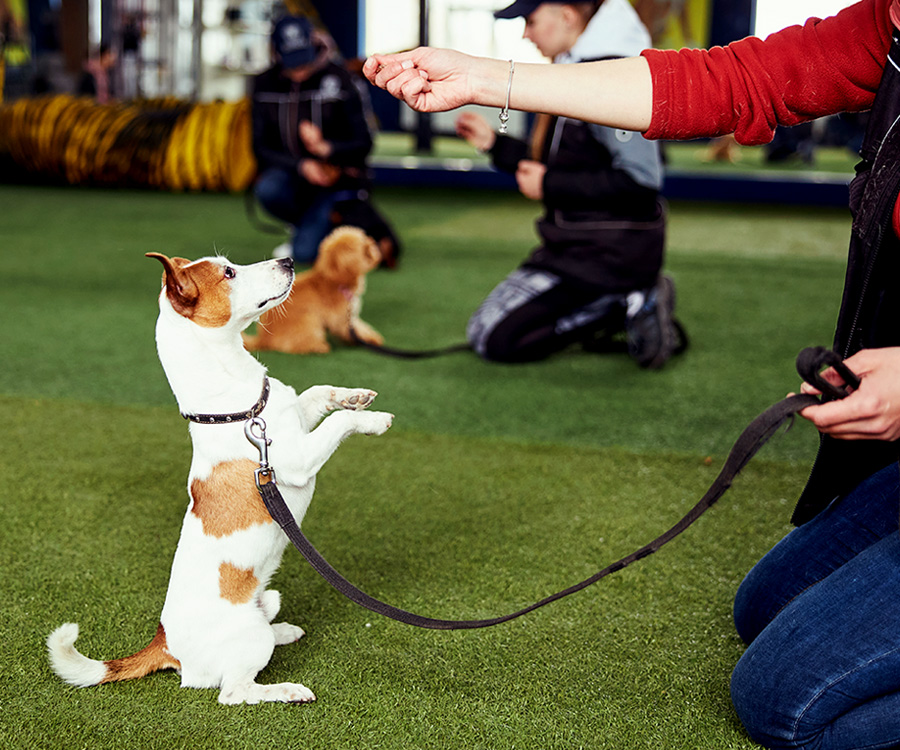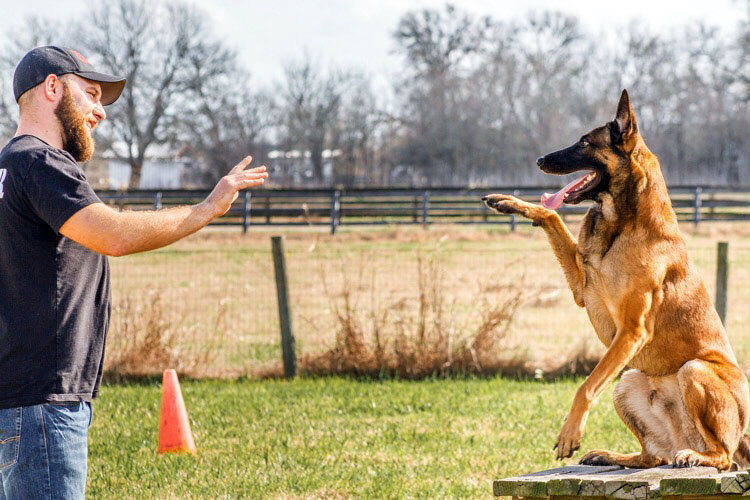Just How to Incorporate Games into Your Dog Training Regimen
Important Tips for Effective Dog Training: An Overview for Pet Dog Owners
Effective dog training is a diverse process that needs a critical approach customized to both the pet dog's personality and the owner's purposes. Secret elements such as establishing constant commands, employing positive reinforcement, and helping with early socialization play vital functions in promoting a well-adjusted canine buddy. However, numerous animal owners experience difficulties that can hinder progress, leading to disappointment and uncertainty. Understanding exactly how to navigate these obstacles can considerably improve the training experience, ultimately changing the partnership in between proprietor and pet dog. What are the crucial approaches that can be used to make certain success in this endeavor?
Understanding Dog Habits
Recognizing pet behavior is crucial for effective training and fostering an unified relationship in between canines and their owners. Pets interact largely through body movement, articulations, and actions, making it vital for owners to translate these signals properly. Acknowledging a pet's pose, tail placement, and ear positioning can give insights right into its emotion. For example, a wagging tail does not always show happiness; it can likewise signify enjoyment or anxiety.

Socialization plays a significant role in dog actions; direct exposure to numerous settings, individuals, and other animals can considerably impact a dog's temperament. Aspects such as type qualities and individual temperament must direct training techniques, as some types may have specific behavior qualities that require tailored strategies. By comprehending these elements, proprietors can create an encouraging atmosphere that encourages favorable behavior, causing successful training end results and a much deeper bond with their pets.
Developing Consistent Commands
Reliable communication with your pet dog begins with developing consistent commands. This fundamental element of training is crucial for promoting understanding between you and your family pet. Consistency in the commands you make use of guarantees that your pet can dependably associate particular words or expressions with the preferred behaviors.
When selecting commands, select clear, unique words that are easy to set apart and say from each other. Stay clear of using similar-sounding commands that may perplex your canine. For instance, making use of "sit" and "stay" is suitable, however "rest" and "hit" might bring about misunderstandings.
Additionally, preserve the exact same tone and quantity for each and every command. Canines are delicate to singing cues, so varying your tone can develop complication.
It is equally essential to guarantee that all member of the family are on the same page relating to the commands utilized. A united front in command usage will avoid mixed signals and reinforce the knowing process.
Favorable Reinforcement Techniques
The power of positive support in dog training hinges on its capability to urge desired habits through incentives and praise. This technique is based in the principle that actions complied with by beneficial end results are a lot more likely to be duplicated. By incorporating favorable reinforcement into your training regimen, you can properly shape your pet's habits in a positive manner.
To apply positive reinforcement, it's important to determine what motivates your pet dog, whether it be treats, toys, or spoken praise. When your pet dog performs a preferred activity, such as remaining on command, immediately award them with a reward or affection. This association in between the command and the favorable outcome reinforces their understanding.
It's essential to timing the incentives correctly; providing the support within seconds of the wanted behavior aids your canine make the link (dog training). Additionally, uniformity is crucial-- make sure that all household members use the very same commands and benefit systems to avoid complication

Progressively, you can minimize the frequency of deals with as your canine learns the behavior, transitioning to applaud or recurring incentives. This method not only promotes a strong bond in between you and your i was reading this pet dog yet also promotes a positive knowing atmosphere, making educating an enjoyable experience for both.
Socialization and Interaction
Constantly revealing your canine to a range of environments, people, and various other pets is crucial for their social development. Socialization should begin early, ideally throughout the critical home window of 3 to 14 weeks, when pups are most responsive to brand-new experiences. Older pets can likewise profit from ongoing socialization initiatives.
Present your pet dog to various setups, such as parks, pet-friendly stores, and urban areas. This direct exposure aids them adjust to different stimuli, decreasing anxiousness and anxiety feedbacks. Motivate positive interactions with various other pet dogs and people, guaranteeing that these encounters are secure and regulated to foster self-confidence.
Use structured playdates with well-mannered pets, as this can improve your pet dog's social skills and educate them proper habits. Obedience classes and training sessions additionally supply outstanding opportunities for socialization, permitting your dog to interact with others in a supervised atmosphere.
Screen your canine's body language throughout interactions, as this will certainly assist you gauge their convenience level. Gradually raise exposure to more challenging situations while ensuring that each experience is positive. A well-socialized pet is a lot more likely to exhibit balanced habits, making them a joy to have in any type of setup.
Addressing Typical Training Obstacles
Every dog owner will come across training obstacles at some point, regardless of their pet dog's age or socializing degree. Identifying common problems such as stubbornness, distractions, and fearfulness can assist in creating effective approaches for enhancement.

Progressively present disturbances as the pet becomes more competent in commands. Short, constant training sessions are likewise effective in keeping interest.
Fearfulness can impede a canine's knowing procedure. Steady desensitization to the resource of anxiety, combined with positive reinforcement, can aid minimize stress and anxiety. Perseverance is crucial; never require a pet into a situation that creates distress, as this might worsen the issue.
Eventually, understanding and addressing these typical obstacles with an organized technique will certainly cultivate a more efficient training experience, reinforcing the bond between pet dog and proprietor while promoting reliable understanding.
Verdict
In summary, successful canine training relies upon a comprehensive understanding of canine habits, the establishment of regular commands, and the application of positive reinforcement methods. additional hints Socializing plays a crucial function in developing well-adjusted pet dogs, while dealing with common training obstacles requires Clicking Here perseverance and adaptability. By implementing these essential methods, family pet owners can foster a strong bond with their dogs and advertise preferable actions, inevitably resulting in a harmonious partnership in between humans and their canine friends.
Recognizing dog actions is necessary for reliable training and fostering a harmonious relationship between canines and their proprietors.Socializing plays a significant role in pet behavior; exposure to various environments, people, and other pets can substantially influence a pet's temperament.The power of positive support in dog training lies in its ability to urge wanted actions with benefits and appreciation. By including positive support right into your training program, you can efficiently form your pet's behavior in a constructive manner.
In summary, effective pet training depends on a comprehensive understanding of canine behavior, the establishment of regular commands, and the application of favorable support strategies.